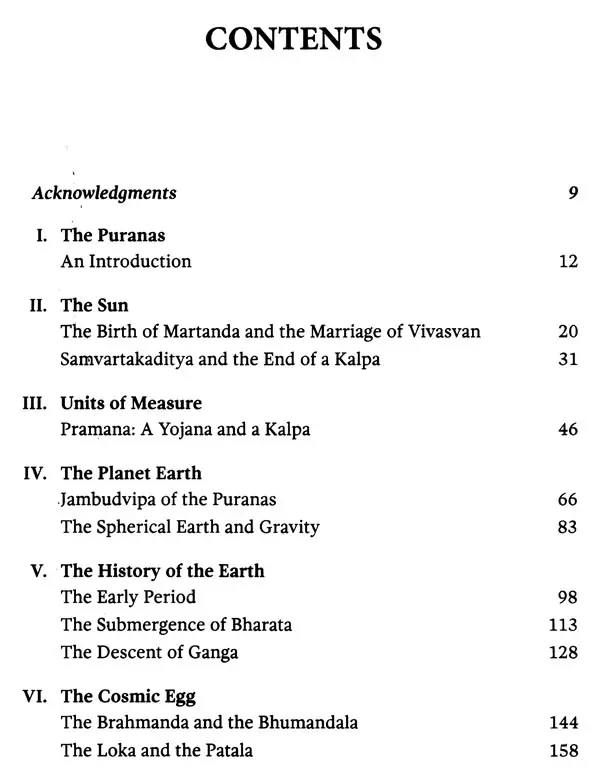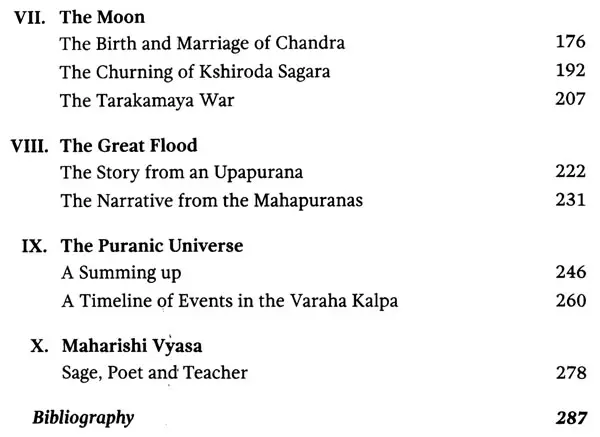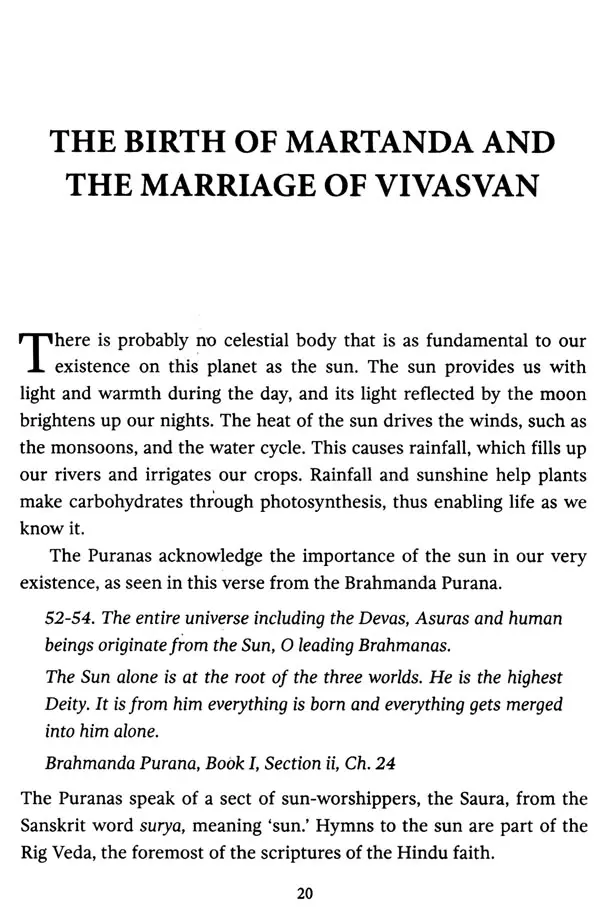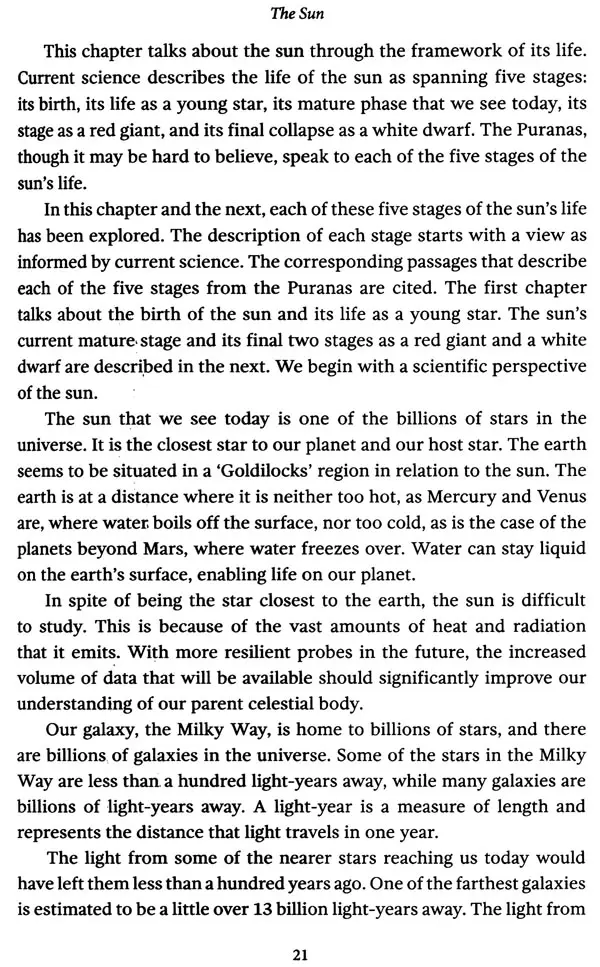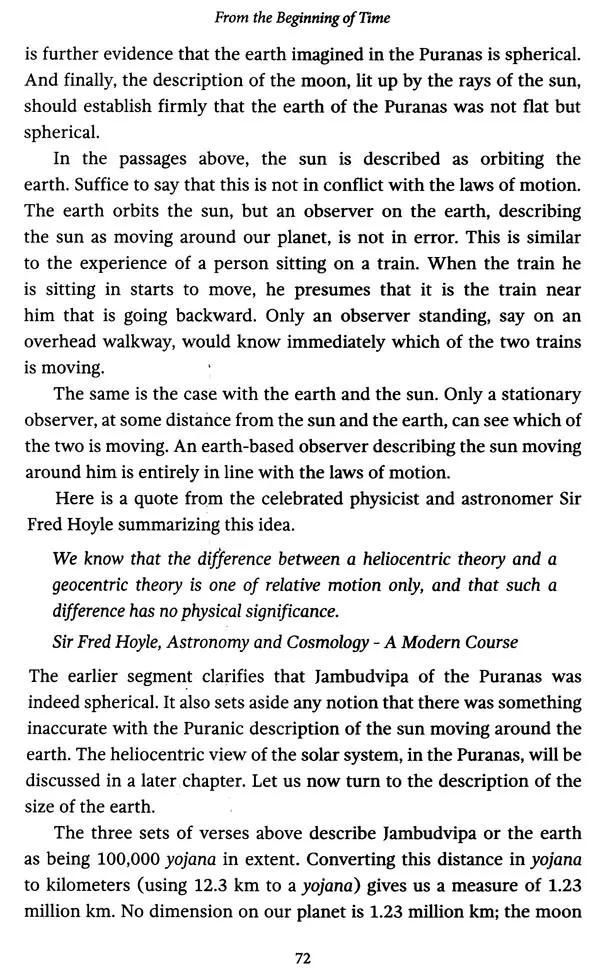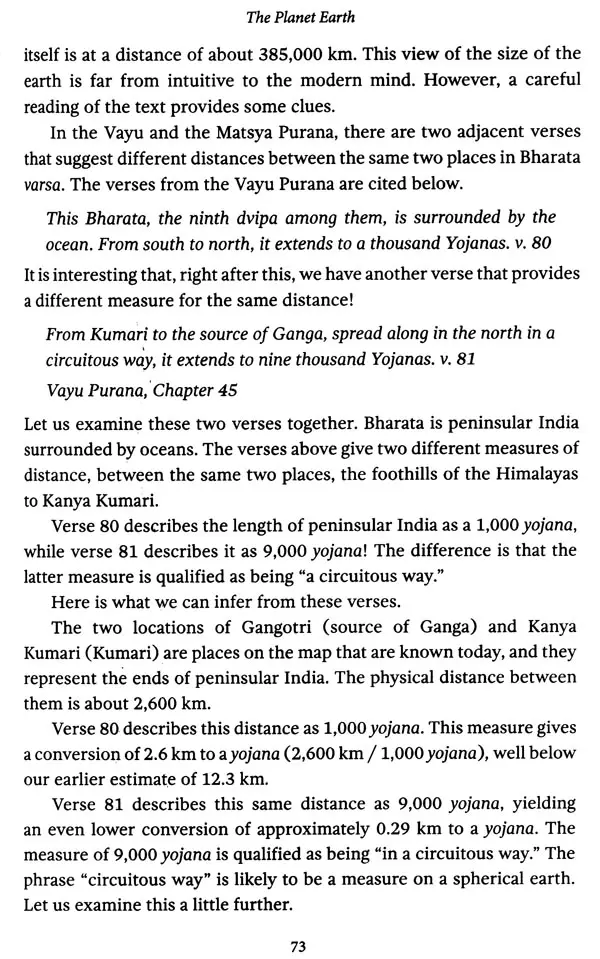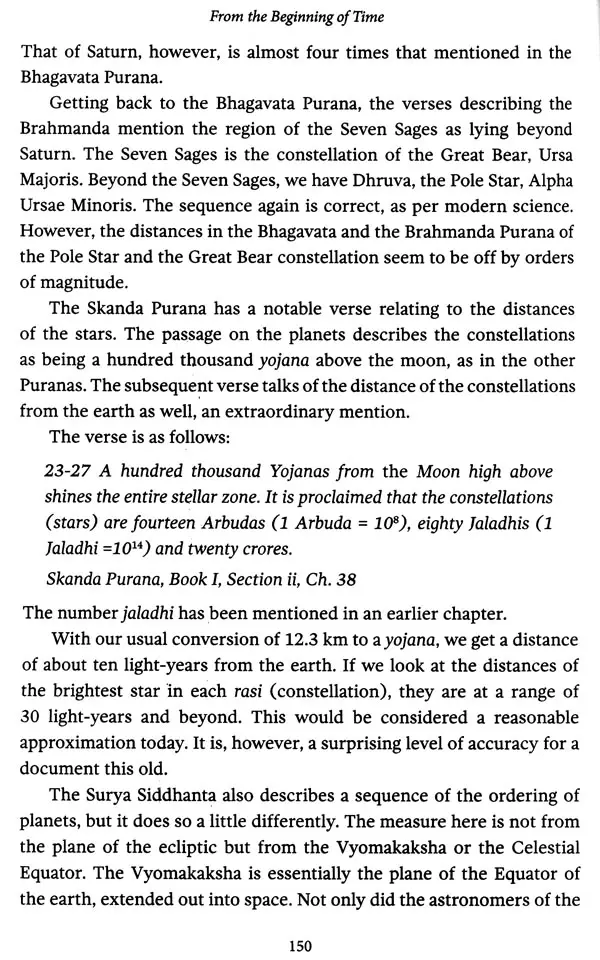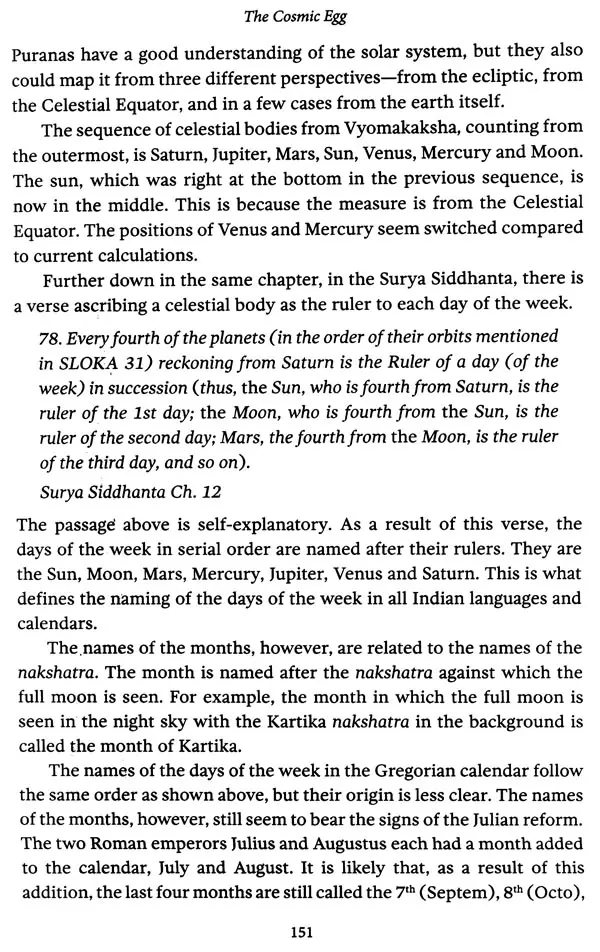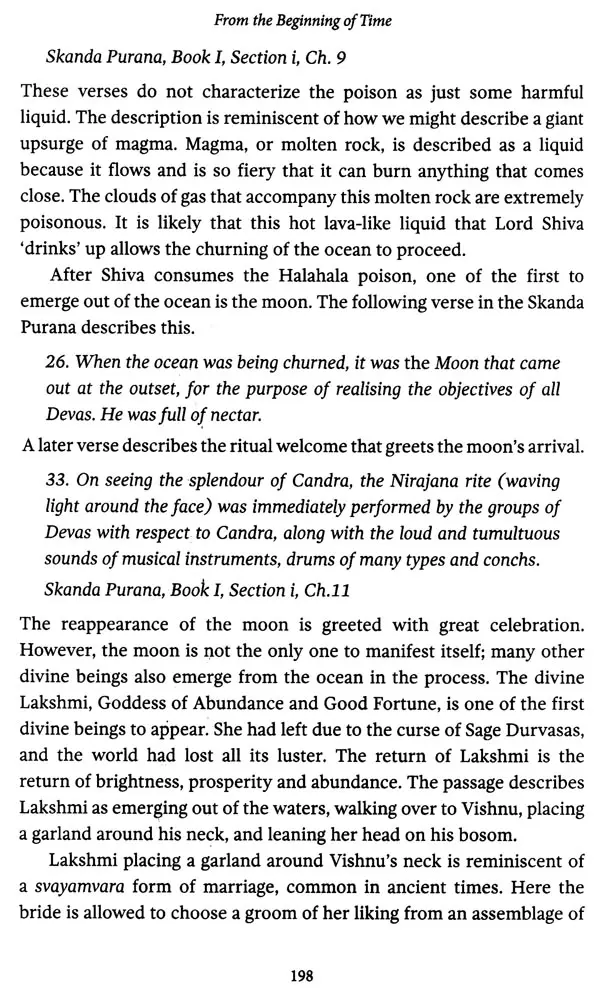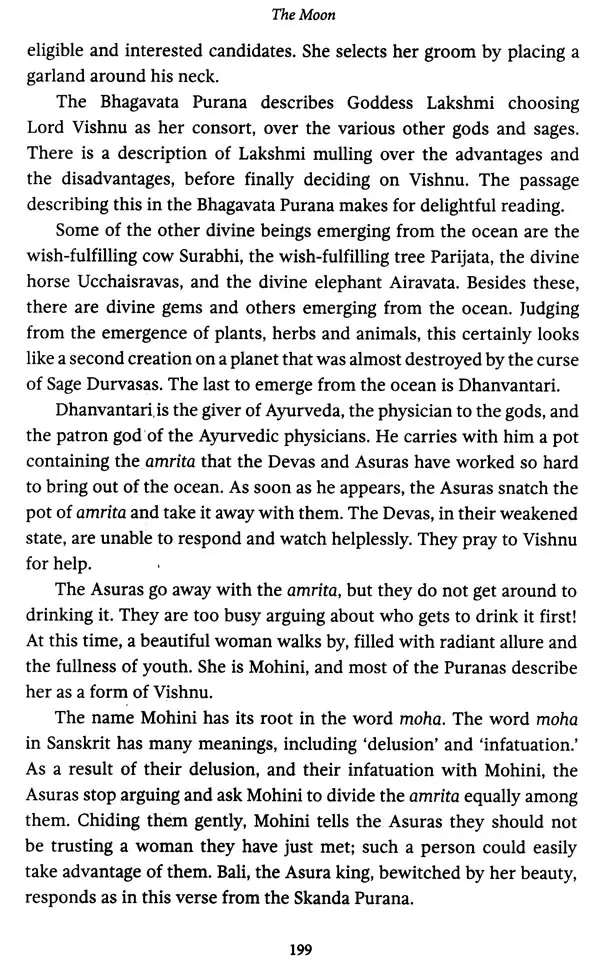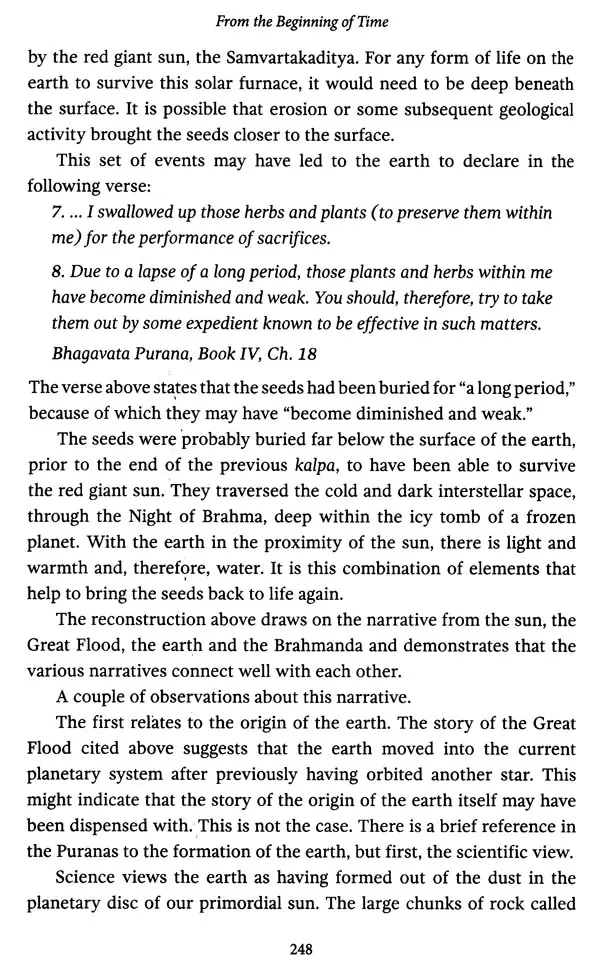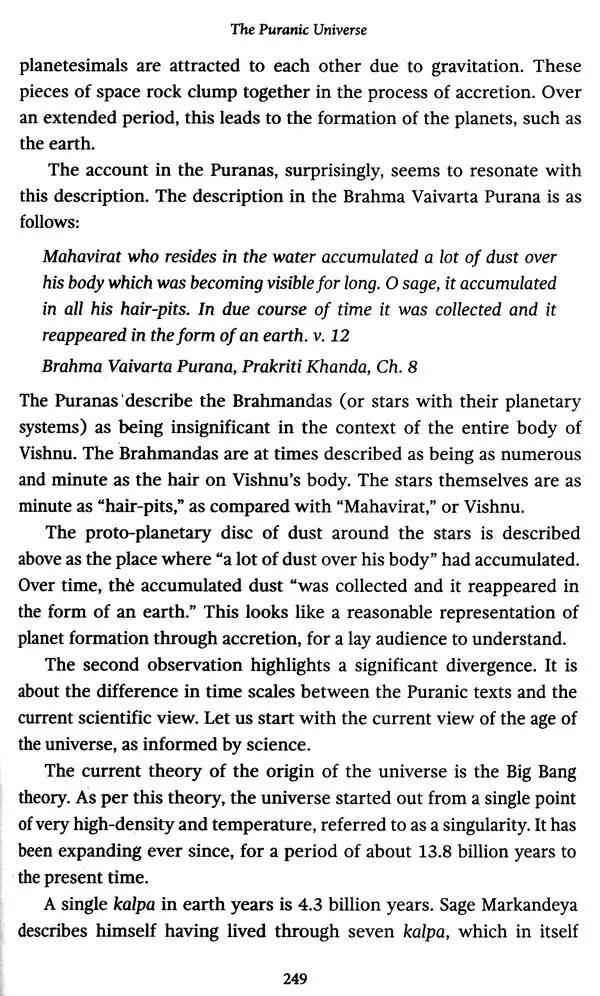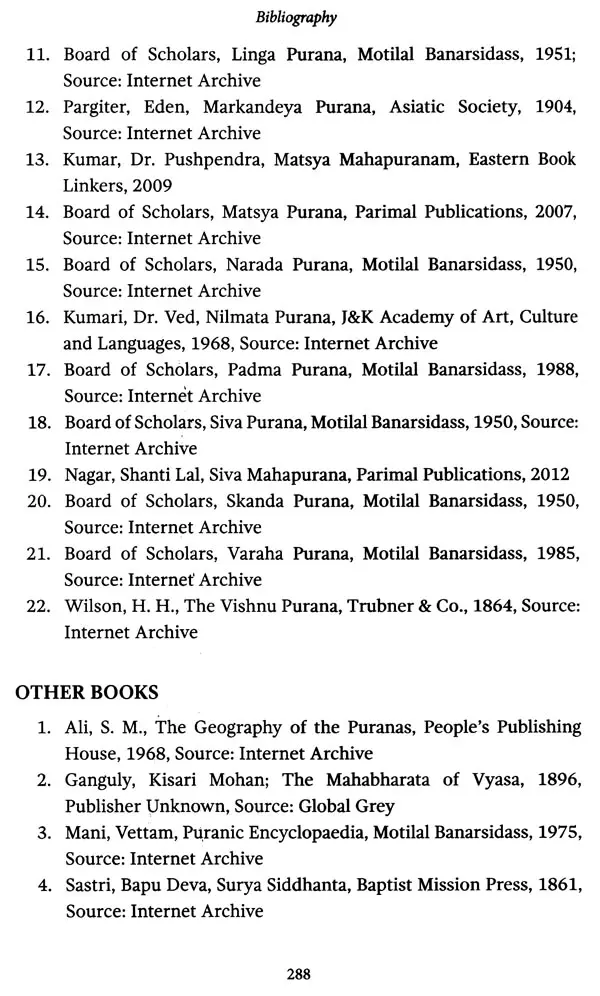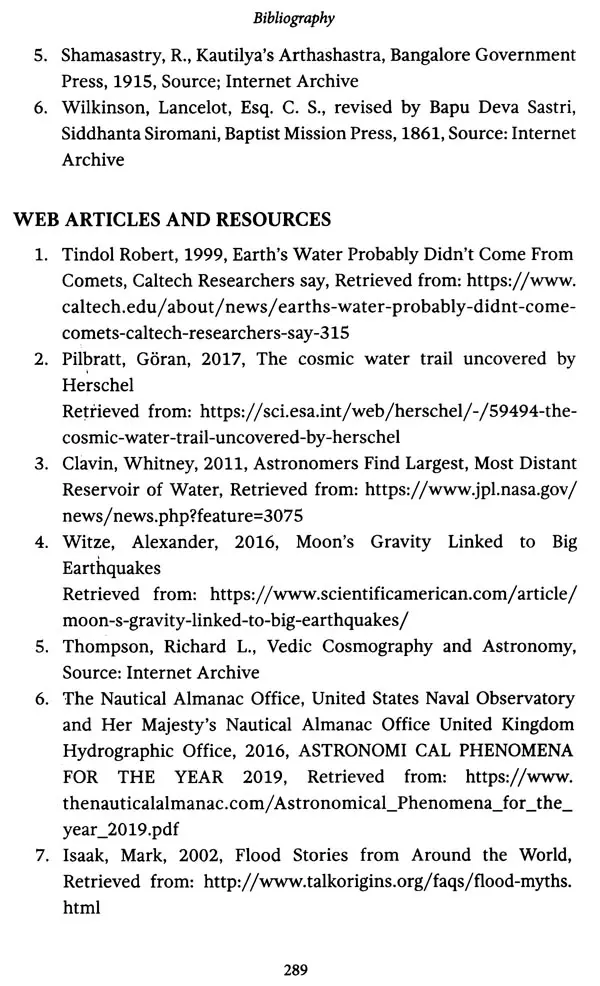
From the Beginning of Time- Modern Science and the Puranic Universe
Book Specification
| Item Code: | UAD701 |
| Author: | Ganesh Swaminathan |
| Publisher: | Notion Press |
| Language: | English |
| Edition: | 2020 |
| ISBN: | 9781648507311 |
| Pages: | 290 |
| Cover: | PAPERBACK |
| Other Details | 9.00 X 6.00 inch |
| Weight | 410 gm |
Book Description
This book attempts to do so - through an exploratory analysis. The narrative is pieced together by exploring familiar stories from the Puranas in great depth. In the well-known story of the Descent of Ganga, the extra-terrestrial origin of Earth's waters has been described in amazing detail. The story of the birth of the Sun God Martanda bears a striking resemblance to the origin of the sun. The Churning', of the Milk Ocean recounts the re-appearance of the Moon. The book delves into many such stories along with external evidence to come up with a compelling chronicle of our Universe. The book shows the Puranic texts in a fascinating new light. It also serves as a primer to the general interest reader by tackling some of the questions that modern science is grappling with in its study of the cosmos.
About eight 'years ago, Ganesh developed an interest in the Puranas. He was fascinated by the insights the ancient text offered, particularly the parallels to space science. He has researched most: of the Mahapuranas, besides other texts, in preparation for writing this book.
Ganesh currently lives in Singapore with his wife and daughter.
The accounts carry with them the names of people and places. They also come with date stamps of the universal calendar, which is the position of stars and planets in the sky. The Itihasas consist of the two epics- the Ramayana and the Mahabharata. They have been translated, widely read, and analyzed. The Puranas, however, are unique as a text.
The Puranas are Smriti, meaning 'that which is remembered.' They are distinct from the Vedas that are Sruti, meaning 'that which is heard.'
The Itihasas, as mentioned earlier, are considered a record of what happened. The word purana in Sanskrit means 'ancient.' The Puranas describe events from a time well before what the Itihasas chronicle.
The stories are less specific, mentioning only the epoch in which the incident occurred.
The Puranas remain something of an enigma. The Bhagavata Purana, for example, describes the solar system as being flat when seen from an edge. This is a unique insight from a text that is over 2,000 years old. The same document, however, describes the earth represented by Jambudvipa as an island surrounded by oceans. This is a description that does not resonate with our understanding of the planet.
One could view the Puranas as comprising passages of great insight, interspersed with verses of poetic imagination. This does not seem to stand up to scrutiny. The Puranas, as a body of work, appear to be characterized by extreme brevity. For example, a story in the Devi Purana describes Rama performing Navratra puja, which enabled him to be victorious in his fight against Ravana. Passages in the Devi Purana paraphrase almost the entire Ramayana of about 25,000 verses in less than 200.
If we can rule out any form of dilation in the text, we must assume that the passages that describe cosmic events are built on an underlying narrative of the universe. Without this perspective, different verses come across as flashes of brilliance that seem disconnected from one another. It is this underlying view of the universe in the Puranas that this book seeks to uncover.
The Puranas describe the various cosmic phenomena, either factually or' allegorically. They represent the events factually as they are observed. This may be how an elementary textbook would characterize the topic. An example of this would be the description of the moon's progress through its various phases. The moon marrying the 27 daughters of Daksha, the 27 nakshatra, is an example of the use of allegory. Every morning at dawn, the moon is seen near a new star, a new nakshatra and, therefore, a new wife.
Most of the stories are repeated across the various Puranic texts, but the level of detail varies. Some Puranas may refer to the story in just a verse or two, while others go into much greater detail. But often, each Purana adds some significant and unique element to the same account. If we compile all the references to a specific topic, across the Puranas, we can aggregate a significant volume of information on the subject. This collection of material can be used to build a narrative for the topic.
Book's Contents and Sample Pages
